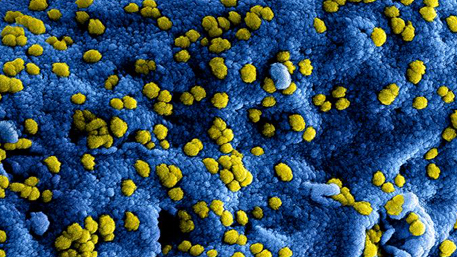
Stanford Medicine scientists hope to use data from wearable devices to predict illness, including COVID-19
Stanford University, April 14, 2020
Stanford University, April 14, 2020
Incorporating Test Characteristics Into SARS-CoV-2 Testing Policy—Sense and Sensitivity
LM Marcotte et al, JAMA Health Forum April 14, 2020
LM Marcotte et al, JAMA Health Forum April 14, 2020
COVID-19 test characteristics including sensitivity, specificity, and diagnostic yield are critical for understanding the risk of false-negatives in the context of community transmission and variable clinical symptoms.
Projecting the transmission dynamics of SARS-CoV-2 through the postpandemic period
SM Kissler et al, Science, April 14, 2020
SM Kissler et al, Science, April 14, 2020
We used estimates of seasonality, immunity, and cross-immunity for betacoronaviruses OC43 and HKU1 from time series data from the USA to inform a model of SARS-CoV-2 transmission. We projected that recurrent wintertime outbreaks of SARS-CoV-2 will probably occur after the initial, most severe pandemic wave.
Prediction models for diagnosis and prognosis in Covid-19
M Sperrin et al, BMJ Editorial, April 14, 2020
M Sperrin et al, BMJ Editorial, April 14, 2020
In just over three months, there were 27 studies with 31 models. This number highlights the importance of publishing the systematic review as a living review—continually updated as evidence mounts. Unfortunately, the review demonstrates that the quality of the identified models is uniformly poor and none can be recommended for clinical use.
Diagnostic Testing for Severe Acute Respiratory Syndrome–Related Coronavirus-2: A Narrative Review
MP CHeng et al, Annals Int Medicine, April 13, 2020
MP CHeng et al, Annals Int Medicine, April 13, 2020
Real-time reverse transcriptase polymerase chain reaction–based assays performed in a laboratory on respiratory specimens are the reference standard for COVID-19 diagnostics. However, point-of-care technologies and serologic immunoassays are rapidly emerging. Although excellent tools exist for the diagnosis of symptomatic patients in well-equipped laboratories.
‘We need an army’: Hiring of coronavirus trackers seen as key to curbing disease spread
M Fox, Stat News, April 13, 2020
M Fox, Stat News, April 13, 2020
What We Know About The Silent Spreaders Of COVID-19
P Huang, NPR, April 13, 2020
P Huang, NPR, April 13, 2020
A novel high specificity COVID-19 screening method based on simple blood exams and artificial intelligence
F Soarez et al, MEDRXIV, April 14, 2020
F Soarez et al, MEDRXIV, April 14, 2020
No hay comentarios:
Publicar un comentario